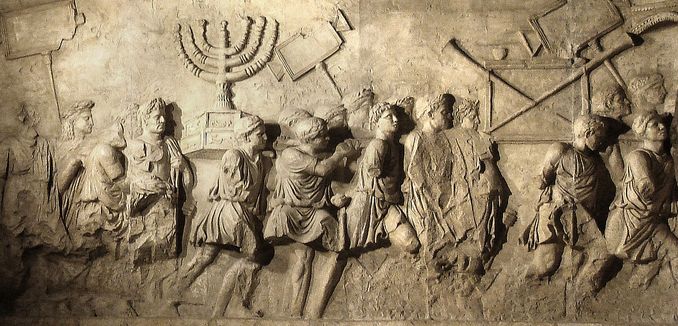Just days after the UN’s cultural agency voted in favor of a resolution denying Jerusalem’s Jewish history, archaeologists have discovered the site where the Romans breached Jerusalem’s walls in the prelude to the destruction of the Second Jewish Temple nearly 2,000 years ago, confirming those ties, The Times of Israel reported Thursday.
The site, just outside of Jerusalem’s Old City, was discovered last winter during the excavation of an area where the new campus for the Bezalel Academy of Arts and Design is to built. According to Israel’s Antiquities Authority, which confirmed the findings earlier this week, archaeologists found “remains of a tower surrounded by scores of stones and boulders fired by Roman catapults at the Jewish forces guarding the wall,” matching the description by Roman Jewish historian Flavius Josephus of the wall breached by the Romans.
Dr. Rina Avner and Kfir Arbib, the excavation directors, of the site explained further:
This is a fascinating testimony of the intensive bombardment by the Roman army, led by Titus, on their way to conquering the city and destroying the Second Temple. The bombardment was intended to attack the sentries guarding the wall and provide cover for the Roman forces so they could approach the wall with battering rams and thereby breach the city’s defenses”. The historian Josephus, an eye witness to the war, provided many details about this wall. According to him, the wall was designed to protect the new quarter of the city that had developed outside its boundaries, north of the two existing city walls. This quarter was named Beit Zeita. The building of the Third Wall was begun by Agrippa I; however, he suspended its construction so as not to incur the wrath of Emperor Claudius and to dispel any doubts regarding his loyalty. The construction of the Third Wall was resumed some two decades later by the defenders of Jerusalem, as part of fortifying the city and the Jewish rebels’ preparations for the Great Revolt against Rome.
Josephus described in detail the route of the wall that began at Hippicus Tower, which is now identified with David’s Citadel. From there the wall continued north to the enormous Psephinus Tower, which defended the northwestern corner of the city wall. At that point the wall turned east and descended toward the Tomb of Queen Helena, which is identified with the place known as the Tombs of the Kings.
The discovery of the battle site settles a longstanding debate among archaeologists as to how far the walls of Jerusalem extended prior to Titus’ attack on Jerusalem.
The official Palestinian position—as expressed in the Palestinian National Charter posted on the website of the Palestinian Authority’s United Nations delegation—is that “the claims of historic and spiritual ties between Jews and Palestine are not in agreement with the facts of history or with the true basis of sound statehood.” At the Camp David summit in 2000, then-Palestinian leader Yasser Arafat unsettled President Bill Clinton by denying that there had ever been a Jewish temple in Jerusalem. Arafat’s successor, Mahmoud Abbas, has repeatedly and explicitly lashed out against suggestions that Jews have links to Jerusalem, which is mentioned by name over 600 times in the Jewish Bible.
Palestinian attempts to erase or cast doubt on the well-established historical connection between Jerusalem and the Jewish faith, which The New York Times noted last year, is a phenomenon that former Israeli Foreign Ministry Director-General Dore Gold has described as “Temple denial.” Days after the Times report, the Mufti of Jerusalem, who was appointed by Palestinian Authority President Mahmoud Abbas, claimed that the Temple Mount has been the site of a mosque “since the creation of the world” and that it never housed a Jewish temple, despite ample evidence to the contrary.
Writing earlier this week in The Tower, Petra Marquardt-Bigman observed that the “Temple denial” inherent in the UNESCO resolution is nothing new:
As absurd as this may sound to Western ears considering the archaeological evidence to the contrary, it is important to understand that “Temple denial” is no fringe view among Palestinians and Muslims in general: The late Palestinian leader Yasser Arafat was not the least bit embarrassed to deny the historic existence of the Jewish temples in Jerusalem during the Camp David negotiations in July 2000, and his successor Mahmoud Abbas as well as other Palestinian officials and religious leaders have repeated similar claims often enough to justify the conclusion, as the author Daniel Levin wrote in The Forward in 2009, that “Temple denial has become a central tenet of Palestinian nationalism.”
[Photo: Steerpike / WikiCommons ]




